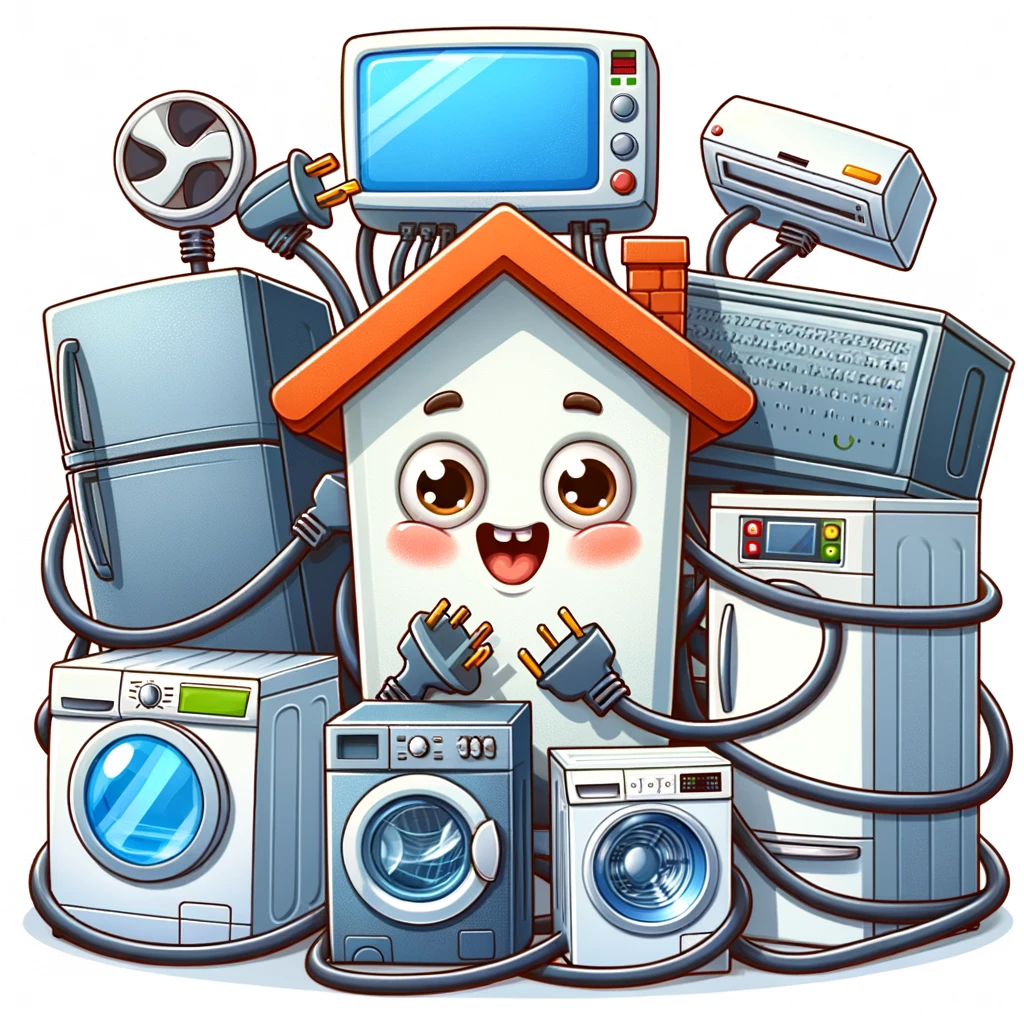Introduction
In today’s eco-conscious world, understanding the dynamics of energy consumption within our homes has never been more critical. As we strive to balance comfort with sustainability, the spotlight turns to the appliances and systems we use daily. These devices, essential for our modern conveniences, can also be the largest contributors to our monthly energy bills. Recognizing which of these consumes the most electricity is the first step toward not only reducing our environmental footprint but also unlocking significant savings. This article aims to shed light on the usual suspects of high energy consumption and guide you toward making informed decisions that benefit both the planet and your wallet.
The Biggest Energy Consumers in Your Home
In the quest to optimize our homes for energy efficiency, it’s essential to pinpoint which appliances and systems draw the most power. These energy hogs can significantly impact our electricity bills and environmental footprint. Here’s a closer look at the top culprits and how you can manage their consumption more effectively.
Heating and Cooling Systems
Heating and cooling systems account for a significant portion of household energy use, especially in regions with extreme temperatures. Air conditioners and heating systems, while essential for comfort, can be costly to run. To optimize their usage and save energy, consider setting your thermostat to an eco-friendly temperature that balances comfort with energy savings. Additionally, regular maintenance and timely upgrades to energy-efficient models can also reduce this consumption significantly.
Water Heaters
Traditional water heaters are another major source of energy consumption, continuously heating water to a set temperature, regardless of demand. This process can account for a substantial part of your home’s energy bill. Switching to tankless water heaters, which provide hot water on demand without the need to maintain a reservoir at a constant temperature, can offer considerable energy and cost savings over time.
Washers and Dryers
Laundry appliances, particularly dryers, are heavy energy users. To minimize their impact, consider washing clothes in cold water, which is often equally effective for cleaning and significantly reduces energy use. Additionally, drying consecutive loads can take advantage of the heat already built up in the dryer, further reducing energy consumption.
Refrigerators and Freezers
These appliances run continuously, making them constant energy consumers. Optimizing their efficiency involves regular maintenance, such as cleaning coils and ensuring a tight seal on doors. Furthermore, positioning your refrigerator away from heat sources and ensuring it’s not overfilled can improve air circulation and efficiency.
Cooking Appliances
The kitchen is another area where energy consumption can quickly add up, especially when using ovens and stovetops. Electric appliances, in general, tend to use more energy than their gas counterparts. However, using microwaves or pressure cookers for smaller meals can be a more energy-efficient option. Additionally, when using the oven, try to cook multiple items together to make the most out of the energy used.
By understanding and managing the energy consumption of these key household appliances, you can significantly reduce your monthly bills and contribute to a more sustainable environment.
Lesser-Known Energy Drainers
While the heavyweights of home energy consumption are often well-known, several lesser-acknowledged appliances and habits can stealthily contribute to your energy bill. Understanding these hidden culprits is crucial for a comprehensive approach to reducing your household’s electricity use.
Consumer Electronics
It’s easy to overlook the small, standby power consumption of our everyday electronics. TVs, computers, gaming consoles, and even chargers, when plugged in but not actively used, continue to draw power—a phenomenon known as ‘phantom load’ or ‘vampire power.’ This passive energy drain can add up significantly over time. To combat this, consider using power strips to turn off multiple devices at once, unplugging devices when they’re not in use, or investing in smart plugs that can be controlled remotely to ensure your electronics are only on when needed.
Lighting
The choice of lighting in your home plays a substantial role in your overall energy consumption. Traditional incandescent bulbs consume an excessive amount of electricity and generate heat, adding to cooling needs. Switching to LED lighting can markedly reduce your home’s energy use, offering the same level of brightness for a fraction of the energy. Furthermore, making use of natural light wherever possible not only decreases reliance on artificial lighting during the day but also enhances the well-being of your home’s occupants. Consider redesigning your space to maximize the use of windows and skylights, and choose paint colors that reflect rather than absorb light, to make the most of the sunlight your home receives.
In addition to these measures, adopting strategic lighting design can optimize your energy savings. This involves using task lighting over ambient lighting when possible, installing dimmer switches to reduce energy usage while maintaining control over lighting levels, and optimizing the use of timers and motion sensors to ensure lights are only on when needed. By addressing these lesser-known energy drainers, you can further refine your home’s energy consumption profile, leading to even greater savings and a lower environmental impact.
How to Monitor and Reduce Your Energy Consumption
Gaining insights into your home’s energy usage patterns is the first step toward implementing effective strategies to reduce consumption. With the right tools and habits, you can significantly lower your energy bills and contribute to a more sustainable environment.
Energy Monitoring Tools
In today’s digital age, smart meters and energy monitors have become invaluable tools for homeowners seeking to understand and optimize their energy usage. These devices provide real-time data on the amount of electricity being consumed in your home, allowing you to identify which appliances or times of day are most energy-intensive. By understanding your home’s energy patterns, you can make targeted changes to reduce consumption. For instance, smart meters can highlight the cost-effectiveness of running certain appliances during off-peak hours, potentially leading to substantial savings.
Implementing Energy-Efficient Habits
Small changes in daily habits can have a big impact on your home’s energy consumption. Simple actions like unplugging devices when not in use, adjusting your thermostat by a few degrees to reduce heating and cooling demand, and using natural light instead of artificial lighting whenever possible can collectively lead to significant energy savings. Moreover, the integration of smart home devices, such as smart thermostats and LED lighting, can automate these energy-saving habits, making it easier for you to maintain an energy-efficient home. Smart thermostats, for example, can learn your schedule and preferences, adjusting your home’s temperature to optimize comfort and efficiency without manual intervention.
Upgrading to Energy-Efficient Appliances
When it’s time to replace old appliances, choosing models with high energy efficiency ratings can lead to long-term savings and reduced environmental impact. Look for the Energy Star label—a mark of energy efficiency recognized worldwide—when selecting new appliances. These products are certified to use less energy without sacrificing performance or functionality. While energy-efficient models might have a higher upfront cost, the savings on your energy bills can offset this over time, making them a wise investment for both your wallet and the planet.
By taking proactive steps to monitor and reduce your home’s energy consumption through the use of modern tools, adopting energy-saving habits, and investing in efficient appliances, you can achieve a more sustainable lifestyle while enjoying lower energy costs
Conclusion
In conclusion, understanding and managing your home’s energy consumption can significantly impact both your finances and the environment. By identifying the major and minor appliances that contribute most to your energy bills, adopting smarter habits, and leveraging modern technology for efficiency, you can forge a path toward a more sustainable and cost-effective lifestyle. Whether it’s through upgrading to energy-efficient appliances, utilizing energy monitoring tools, or simply being more mindful about your daily energy use, each step you take can lead to substantial savings and a lesser environmental footprint. I encourage you to implement these strategies and join the growing movement of individuals making conscious choices for a healthier planet and a more financially savvy household.



